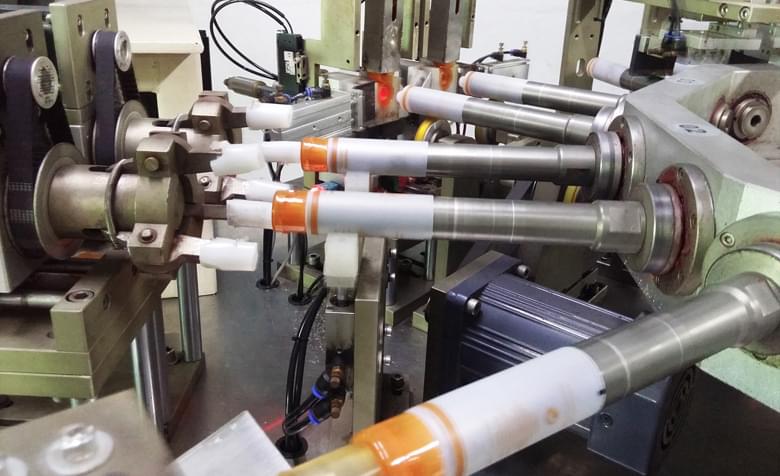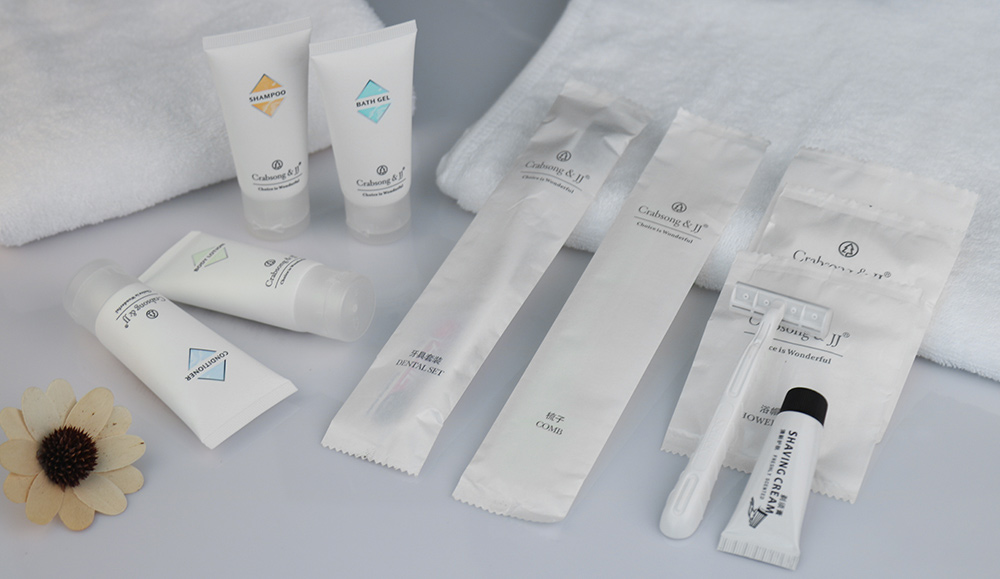Hyatt First Quarter 2018 EBITDA Decreased 7.3%
Hyatt Hotels Corporation (NYSE: H) today reported first quarter 2018 financial results.
Net income attributable to Hyatt was $411 million, or $3.40 per diluted share, in the first quarter of 2018, compared to $55 million, or $0.42 per diluted share, in the first quarter of 2017.
Adjusted net income attributable to Hyatt was $40 million, or $0.33 per diluted share, in the first quarter of 2018, compared to $89 million, or $0.68 per diluted share, in the first quarter of 2017.
Refer to the table on page 4 of the schedules for a summary of special items impacting Adjusted net income and Adjusted earnings per share in the three months ended March 31, 2018.

The Company’s results reflect the adoption of Accounting Standards Update (ASU 2014-09), Revenue from Contracts with Customers (Topic 606) on a full retrospective basis.
As such, prior period results have been adjusted to reflect the adoption of ASU 2014-09.
Mark S. Hoplamazian, president and chief executive officer of Hyatt Hotels Corporation, said, “We had a strong start to the year, highlighted by better-than-expected lodging fundamentals and a $1.0 billion sale of three hotel properties.
The sale transaction clearly demonstrates the high quality of Hyatt’s asset base as well as our commitment to unlock shareholder value.”

First quarter of 2018 financial highlights as compared to the first quarter of 2017 are as follows:
- Net income increased 643.6% to $411 million, aided by gains on sales of real estate.
- Adjusted EBITDA decreased 7.3% to $202 million, down 8.4% in constant currency.
- Comparable systemwide RevPAR increased 4.3%, including an increase of 1.6% at comparable owned and leased hotels. Excluding the impact of Easter holiday timing, comparable systemwide RevPAR increased 4.6% and comparable owned and leased RevPAR increased 2.0%.
- Comparable U.S. hotel RevPAR increased 2.7%; full service and select service hotel RevPAR increased 2.7% and 2.8%, respectively. Excluding the impact of Easter holiday timing, comparable U.S. hotel RevPAR increased 3.1%; full service and select service hotel RevPAR increased 3.3% and 2.8%, respectively.
- Net rooms growth was 7.2%.
- Comparable owned and leased hotel operating margin increased 80 basis points to 24.3%.
- Adjusted EBITDA margin decreased 30 basis points to 30.7%, in constant currency.

Mr. Hoplamazian continued, “We remain cautiously optimistic for the balance of 2018 based on our underlying business trends and encouraging group booking patterns.
We expect growth in both systemwide RevPAR and hotel rooms to sustain upward momentum in our management and franchise fees as we evolve to an asset-lighter business model.”

First-quarter of 2018 financial results as compared to the first quarter of 2017 are as follows:
Management, Franchise, and Other Fees
Management, franchise, and other fee revenue increased 15.7% (13.9% in constant currency) to $132 million, driven by new hotels and improved performance at existing hotels.
Base management fees increased 12.2% to $53 million and incentive management fees increased 13.5% to $34 million. Franchise fees increased 9.9% to $28 million.
Other fee revenues increased 49.0% to $17 million, including an $8 million legal settlement in relation to a franchise agreement termination for an unopened property.

Americas Management and Franchising Segment
America’s management and franchising segment Adjusted EBITDA increased 14.6% (14.3% in constant currency). RevPAR for comparable Americas full-service hotels increased 3.1%; occupancy increased 170 basis points and ADR increased 0.8%. RevPAR for comparable Americas select service hotels increased 3.6%; occupancy increased 150 basis points and ADR increased 1.5%. Revenue from management, franchise, and other fees increased 9.5% (9.2% in constant currency).
Transient rooms revenue at comparable U.S. full-service hotels increased 4.4%; room nights increased 1.7% and ADR increased 2.7%. Group room revenue at comparable U.S. full-service hotels decreased 1.4%; room nights decreased 0.6% and ADR decreased 0.8%. Group demand was negatively impacted by the timing of the Easter holiday.
America’s net rooms increased 5.5% compared to the first quarter of 2017.

Southeast Asia, Greater China, Australia, South Korea, Japan and Micronesia (ASPAC) Management and Franchising Segment
ASPAC management and franchising segment Adjusted EBITDA increased 23.4% (16.1% in constant currency).
RevPAR for comparable ASPAC full service hotels increased 6.7%, led by strong RevPAR growth in Greater China.
Occupancy increased 350 basis points and ADR increased 1.5%. Revenue from management, franchise and other fees increased 20.1% (14.6% in constant currency).
ASPAC net rooms increased 11.3% compared to the first quarter of 2017.

Europe, Africa, Middle East and Southwest Asia (EAME/SW Asia) Management and Franchising Segment
EAME/SW Asia management and franchising segment Adjusted EBITDA increased 25.9% (19.8% in constant currency).
RevPAR for comparable EAME/SW Asia full service hotels increased 7.0%, driven by growth across the region with particular strength in Turkey, France and India.
Occupancy increased 380 basis points and ADR increased 1.0%.
Revenue from management, franchise and other fees increased 18.3% (12.8% in constant currency).

EAME/SW Asia net rooms increased 10.9% compared to the first quarter of 2017.
Owned and Leased Hotels Segment
Total owned and leased hotels segment Adjusted EBITDA decreased 20.7% (21.3% in constant currency) including a 60.1% decrease in pro rata share of unconsolidated hospitality ventures Adjusted EBITDA, reflecting the Playa Hotels & Resorts transaction with Pace Holdings Corporation in the first quarter of 2017. The decrease in segment Adjusted EBITDA was driven by transaction activity. Refer to the table on page 16 of the schedules for a detailed list of portfolio changes and the year-over-year net impact to total owned and leased hotels segment Adjusted EBITDA.
Owned and leased hotels segment revenues decreased 11.9% (13.3% in constant currency). RevPAR for comparable owned and leased hotels increased 1.6%. Occupancy increased 50 basis points and ADR increased 0.9%.

Corporate and Other
Corporate and other Adjusted EBITDA decreased 3.3% (3.0% in constant currency).
Corporate and other revenues increased 52.6% (consistent in constant currency), primarily driven by wellness business acquisitions (Miraval and Exhale Enterprises, Inc. (“exhale”)).

Selling, General, and Administrative Expenses
Selling, general, and administrative expenses decreased 3.0%, inclusive of rabbi trust impact and stock- based compensation. Adjusted selling, general, and administrative expenses increased 6.0%, primarily driven by payroll and related expenses, including severance charges and the acquisition of exhale. Refer to the table on page 9 of the schedules for a reconciliation of selling, general, and administrative expenses to Adjusted selling, general, and administrative expenses.
OPENINGS AND FUTURE EXPANSION
Nine hotels (or 1,896 rooms) were added in the first quarter of 2018. The Company’s net rooms increased 7.2%, compared to the first quarter of 2017. The Company is on pace to add approximately 60 hotels in the 2018 fiscal year.
As of March 31, 2018, the Company had executed management or franchise contracts for approximately 340 hotels (or approximately 73,000 rooms), compared to the expectation for approximately 330 hotels and 70,000 rooms as of December 31, 2017. This represents development pipeline growth of approximately 10%, compared to the first quarter of 2017.

SHARE REPURCHASE
During the first quarter of 2018, the Company repurchased $95 million of shares, consisting of 1,209,987 shares of Class A common stock, including 244,260 shares, or $20 million of shares delivered in the settlement of a November 2017 accelerated share repurchase program. There were no Class B shares repurchased in the quarter. The Company ended the first quarter with 47,515,803 Class A and 70,496,643 Class B shares issued and outstanding.
From April 1 through April 27, 2018, the Company repurchased 1,070,144 shares of Class A common stock for an aggregate purchase price of $82 million. As of April 27, 2018, the Company had approximately $706 million remaining under its share repurchase authorization.

CAPITAL STRATEGY UPDATE
During the first quarter, the Company completed the following transaction:
- On March 29, 2018, sold the Andaz Maui at Wailea Resort (301 rooms), the Grand Hyatt San Francisco (668 rooms), and the Hyatt Regency Coconut Point Resort and Spa (454 rooms) for pre-tax net proceeds of approximately $992 million in a portfolio sale to Host Hotels & Resorts, Inc. The hotels continue to be Hyatt-branded under long-term management agreements.
The Company remains on track to successfully execute plans to sell approximately $1.5 billion of real estate by the end of 2020 as part of its capital strategy. Two of the three properties in the portfolio transaction, the Andaz Maui at Wailea Resort and the Grand Hyatt San Francisco, reflect a combined attributed sale value of approximately $800 million and form part of the $1.5 billion permanent sell-down program. To date, the Company has sold approximately $1.1 billion of real estate under the program.

BALANCE SHEET / OTHER ITEMS
As of March 31, 2018, the Company reported the following:
- Total debt of $1,450 million.
- Pro rata share of unconsolidated hospitality venture debt of $564 million, substantially all of which is non-recourse to Hyatt and a portion of which Hyatt guarantees pursuant to separate agreements.
- Cash and cash equivalents, including investments in highly-rated money market funds and similar investments, of $1,160 million, short-term restricted cash of $450 million and short-term investments of $54 million.
- Undrawn borrowing availability of $1.5 billion under Hyatt’s revolving credit facility. In the quarter, the Company refinanced the $1.5 billion senior unsecured revolving credit facility with a syndicate of lenders, extending the maturity of the facility to January 2023.

2018OUTLOOK
The Company’s current outlook incorporates the adoption of new accounting standards which is expected to result in an approximate $32 million reduction in 2018 fiscal year Adjusted EBITDA, compared to the initial outlook provided on February 14, 2018, which was based on historical accounting principles generally accepted in the U.S. (GAAP).
Consistent with prior disclosures, the vast majority of the Adjusted EBITDA reduction is attributable to the accounting for deferred gains.
Also reflected in the revised outlook is the March 2018 portfolio sale to Host Hotels & Resorts, Inc. which reduced estimated 2018 fiscal year Adjusted EBITDA by approximately $40 million.

The Company is revising the following information for the 2018 fiscal year:
- Net income is expected to be approximately $495 million to $553 million, compared to previous expectation of $176 million to $215 million.
- Adjusted EBITDA is expected to be approximately $765 million to $785 million, compared to previous expectation of approximately $805 million to $825 million. These estimates also include a favorable impact from foreign currency of approximately $5 million (low end of forecast) to $10 million (high end of forecast), compared to previous expectation of $0 (low end of the forecast) to $5 million (high end of the forecast). Refer to the table on page 3 of the schedules for a reconciliation of Net Income Forecast to Adjusted EBITDA Forecast.
- Comparable systemwide RevPAR is expected to increase approximately 2.0% to 3.5% compared to previous expectation of 1.0% to 3.0%.
- Depreciation and amortization expense is expected to be approximately $320 million to $324 million, compared to previous expectation of $367 million to $371 million.
- Interest expense is expected to be approximately $76 million, compared to previous expectation of $75 million to $76 million.
- The effective tax rate is expected to be approximately 27% to 29%, compared to previous expectation of 27% to 31%.
- The Company expects to grow net rooms by approximately 6.5% to 7.0%, compared to previous expectation of approximately 6.0% to 6.5%. The number of hotel openings remains at approximately 60.
- Capital expenditures are expected to be approximately $375 million, compared to previous expectation of approximately $350 million. The increase is largely attributable to investments funded by cash proceeds from the 2017 sale of Avendra LLC.
- The Company expects to return at least $700 million to shareholders, compared to a previous expectation of at least $500 million, through a combination of cash dividends on its common stock and share repurchases.

The Company is reaffirming the following information for the 2018 fiscal year:
- Adjusted selling, general, and administrative expenses are expected to be approximately $300 million, consistent with previous guidance. This excludes approximately $34 million to $35 million of stock-based compensation expense, which reflects a $1 million decrease from previous guidance, and any potential expenses related to benefit programs funded through rabbi trusts.
- Other income (loss), net is expected to be negatively impacted by approximately $65 million to $75 million related to performance guarantee expense for the four managed hotels in France.
No additional disposition or acquisition activity beyond what has been completed as of the date of this release has been included in the outlook.
The Company’s outlook is based on a number of assumptions that are subject to change and many of which are outside the control of the Company.
If actual results vary from these assumptions, the Company’s expectations may change. There can be no assurance that Hyatt will achieve these results.

ADOPTION OF NEW REVENUE RECOGNITION ACCOUNTING STANDARDS
The most meaningful impacts of the adoption of ASU 2014-09 are as follows:
- Gains on the sales of real estate are generally recognized when control of the property transfers to the buyer. Previously, gains on properties sold subject to a management agreement were deferred and amortized in management, franchise, and other fees revenue over the life of the contract. This change results in a reduction in fees revenue on the condensed consolidated statements of income and a reduction in Adjusted EBITDA. However, in periods in which we dispose of a property, we expect to recognize the gain upon sale, which would increase net income in the period.
- The amortization of management and franchise agreement assets constituting payments to customers (Contra Revenue) is recognized as a reduction to management, franchise and other fees revenue over the expected customer life. Previously, the amortization of such payments was recognized within depreciation and amortization expense. This change results in an equal and offsetting reduction to both revenues and depreciation and amortization expense, such that there is no impact to net income.

Other areas impacted by the adoption of ASU 2014-09 include:
- Incentive management fees are recognized to the extent that it is probable that a significant reversal will not occur in a future period, as opposed to recognizing amounts that would be due if the management contract was terminated at the end of the reporting period.
- Revenue related to our loyalty program, primarily recognized in revenues for the reimbursement of costs incurred on behalf of managed and franchised properties on our condensed consolidated statements of income, is recognized upon point redemption, net of any redemption expense paid to third parties.
- For systemwide services recognized under a fund model, the revenues for the reimbursement of costs incurred on behalf of managed and franchised properties on our condensed consolidated statements of income, are recognized over time as the services are provided, as opposed to when we incur the related expenses.
We do not anticipate the changes for incentive management fees will affect the Company’s net income for any full-year period. Please refer to the discussion of these changes in our most recent 10-K and 10-Q filings.

ADJUSTED EBITDA DEFINITION REVISION
Effective January 1, 2018, we made two modifications to our definition of Adjusted EBITDA with the implementation of ASU 2014-09. Our definition has been updated to exclude Contra Revenue which was previously recognized as amortization expense.
As this is strictly a matter of financial presentation, we have excluded Contra Revenue in order to be consistent with our prior treatment and to reflect the way in which we manage our business.
We have also excluded revenues for the reimbursement of costs incurred on behalf of managed and franchised properties and costs incurred on behalf of managed and franchised properties.
These revenues and costs previously netted to zero within Adjusted EBITDA.
Under ASU 2014-09, the recognition of certain revenue differs from the recognition of related costs, creating timing differences that would otherwise impact Adjusted EBITDA.
We have not changed our management of these revenues or expenses, nor do we consider these timing differences to be reflective of our core operations.
These changes reflect how our management evaluates each segment’s performance and also facilitate comparison with our competitors.
We have applied this change to 2017 historical results to allow for comparability between the periods presented.
Please refer to page 8 of the release for definitions of non-GAAP financial measures, and pages 2 and 3 of the schedules for a reconciliation of Net income to Adjusted EBITDA and Net Income Forecast to Adjusted EBITDA Forecast.

DEFINITIONS
Adjusted Earnings Before Interest Expense, Taxes, Depreciation and Amortization (Adjusted EBITDA) and EBITDA
We use the terms Adjusted EBITDA and EBITDA throughout this earnings release. Adjusted EBITDA and EBITDA, as the Company defines them, are non-GAAP measures. We define consolidated Adjusted EBITDA as net income attributable to Hyatt Hotels Corporation plus its pro rata share of unconsolidated hospitality ventures Adjusted EBITDA based on its ownership percentage of each venture, adjusted to exclude the following items:
- interest expense;
- provision for income taxes;
- depreciation and amortization;
- amortization of management and franchise agreement assets constituting payments to customers (Contra Revenue);
- revenues for the reimbursement of costs incurred on behalf of managed and franchised properties;
- costs incurred on behalf of managed and franchised properties;
- equity earnings (losses) from unconsolidated hospitality ventures;
- stock-based compensation expense;
- gains (losses) on sales of real estate;
- asset impairments; and
- other income (loss), net

Effective January 1, 2018, we made two modifications to our definition of Adjusted EBITDA with the implementation of ASU 2014-09.
Our definition has been updated to exclude Contra Revenue which was previously recognized as an amortization expense.
As this is strictly a matter of financial presentation, we have excluded Contra Revenue in order to be consistent with our prior treatment and to reflect the way in which we manage our business.
We have also excluded revenues for the reimbursement of costs incurred on behalf of managed and franchised properties and costs incurred on behalf of managed and franchised properties.
These revenues and costs previously netted to zero within Adjusted EBITDA. Under ASU 2014-09, the recognition of certain revenue differs from the recognition of related costs, creating timing differences that would otherwise impact Adjusted EBITDA.
We have not changed our management of these revenues or expenses, nor do we consider these timing differences to be reflective of our core operations.
These changes reflect how our management evaluates each segment’s performance and also facilitate comparison with our competitors.
We have applied this change to 2017 historical results to allow for comparability between the periods presented.

We calculate consolidated Adjusted EBITDA by adding the Adjusted EBITDA of each of our reportable segments and eliminations to corporate and other Adjusted EBITDA.
Our board of directors and executive management team focus on Adjusted EBITDA as a key performance and compensation measure both on a segment and on a consolidated basis.
Adjusted EBITDA assists us in comparing our performance over various reporting periods on a consistent basis because it removes from our operating results the impact of items that do not reflect our core operations both on a segment and on a consolidated basis.
Our president and chief executive officer, who is our chief operating decision-maker, also evaluates the performance of each of our reportable segments and determines how to allocate resources to those segments, in significant part, by assessing the Adjusted EBITDA of each segment.
In addition, the compensation committee of our board of directors determines the annual variable compensation for certain members of our management based in part on consolidated Adjusted EBITDA, segment Adjusted EBITDA or some combination of both.
We believe Adjusted EBITDA is useful to investors because it provides investors the same information that the Company uses internally for purposes of assessing operating performance and making compensation decisions.

Adjusted EBITDA and EBITDA are not substitutes for net income attributable to Hyatt Hotels Corporation, net income, or any other measure prescribed by GAAP. There are limitations to using non-GAAP measures such as Adjusted EBITDA and EBITDA.
Although we believe that Adjusted EBITDA can make an evaluation of our operating performance more consistent because it removes items that do not reflect our core operations, other companies in our industry may define Adjusted EBITDA differently than we do.
As a result, it may be difficult to use Adjusted EBITDA or similarly named non-GAAP measures that other companies may use to compare the performance of those companies to our performance.
Because of these limitations, Adjusted EBITDA should not be considered as a measure of the income generated by our business.
Our management compensates for these limitations by reference to its GAAP results and using Adjusted EBITDA supplementally.

Adjusted EBITDA Margin
We define Adjusted EBITDA margin as Adjusted EBITDA divided by total revenues excluding Contra Revenue and revenues for the reimbursement of costs incurred on behalf of managed and franchised properties.
We believe Adjusted EBITDA margin is useful to investors because it provides investors the same information that the Company uses internally for purposes of assessing operating performance.

Adjusted Net Income
Adjusted net income, as we define it, is a non-GAAP measure.
We define Adjusted net income as net income attributable to Hyatt Hotels Corporation excluding special items, which are those items deemed not to be reflective of ongoing operations.
We consider Adjusted net income to be an indicator of operating performance because excluding special items allows for period-over-period comparisons of our ongoing operations.
Adjusted net income is not a substitute for net income attributable to Hyatt Hotels Corporation, net income, or any other measure prescribed by GAAP.
There are limitations to using non-GAAP measures such as Adjusted net income.
Although we believe that Adjusted net income can make an evaluation of our operating performance more consistent because it removes special items that are deemed not to be reflective of ongoing operations, other companies in our industry may define Adjusted net income differently than we do.
As a result, it may be difficult to use Adjusted net income or similarly named non-GAAP measures that other companies may use to compare the performance of those companies to our performance.
Because of these limitations, Adjusted net income should not be considered as a measure of the income generated by our business.
Our management compensates for these limitations by reference to its GAAP results and using Adjusted net income supplementally.

Adjusted Selling, General, and Administrative (SG&A) Expenses
Adjusted SG&A expenses, as we define it, is a non-GAAP measure.
Adjusted SG&A expenses exclude the impact of expenses related to deferred compensation plans funded through rabbi trusts and stock-based compensation expense.
Adjusted SG&A expenses assist us in comparing our performance over various reporting periods on a consistent basis because it removes from our operating results the impact of items that do not reflect our core operations, both on a segment and consolidated basis.

Comparable Owned and Leased Hotels Operating Margin
We define comparable owned and leased hotels operating margin as the difference between comparable owned and leased hotels revenues and comparable owned and leased hotels expenses. Comparable owned and leased hotels revenues is calculated by removing non-comparable hotels revenues from owned and leased hotels revenues as reported in our condensed consolidated statements of income.
Comparable owned and leased hotels expenses is calculated by removing both non-comparable owned and leased hotels expenses and the impact of expenses funded through rabbi trusts from owned and leased hotels expenses as reported in our condensed consolidated statements of income.
We believe comparable owned and leased hotels operating margin is useful to investors because it provides investors the same information that the Company uses internally for purposes of assessing operating performance.

Comparable Hotels
“Comparable systemwide hotels” represents all properties we manage or franchise (including owned and leased properties) and that are operated for the entirety of the periods being compared and that have not sustained substantial damage, business interruption or undergone large scale renovations during the periods being compared or for which comparable results are not available.
We may use variations of comparable systemwide hotels to specifically refer to comparable systemwide Americas full service or select service hotels for those properties that we manage or franchise within the Americas management and franchising segment, comparable systemwide ASPAC full service or select service hotels for those properties that we manage or franchise within the ASPAC management and franchising segment, or comparable systemwide EAME/SW Asia full service or select service hotels for those properties that we manage or franchise within the EAME/SW Asia management and franchising segment.
“Comparable owned and leased hotels” represents all properties we own or lease and that are operated and consolidated for the entirety of the periods being compared and have not sustained substantial damage, business interruption or undergone large scale renovations during the periods being compared or for which comparable results are not available.
Comparable systemwide hotels and comparable owned and leased hotels are commonly used as a basis of measurement in our industry.
“Non-comparable systemwide hotels” or “non-comparable owned and leased hotels” represent all hotels that do not meet the respective definition of “comparable” as defined above.

Constant Dollar Currency
We report the results of our operations both on an as reported basis, as well as on a constant dollar basis. Constant dollar currency, which is a non-GAAP measure, excludes the effects of movements in foreign currency exchange rates between comparative periods.
We believe constant dollar analysis provides valuable information regarding our results as it removes currency fluctuations from our operating results.
We calculate constant dollar currency by restating prior-period local currency financial results at the current period’s exchange rates.
These adjusted amounts are then compared to our current period reported amounts to provide operationally driven variances in our results.

Revenue per Available Room (RevPAR)
RevPAR is the product of the average daily rate (ADR) and the average daily occupancy percentage. RevPAR does not include non-room revenues, which consist of ancillary revenues generated by a hotel property, such as food and beverage, parking, telephone and other guest service revenues.
Our management uses RevPAR to identify trend information with respect to room revenues from comparable properties and to evaluate hotel performance on a regional and segment basis.
RevPAR is a commonly used performance measure in our industry.
RevPAR changes that are driven predominantly by changes in occupancy have different implications for overall revenue levels and incremental profitability than do changes that are driven predominantly by changes in average room rates.
For example, increases in occupancy at a hotel would lead to increases in room revenues and additional variable operating costs (including housekeeping services, utilities and room amenity costs), and could also result in increased ancillary revenues (including food and beverage).
In contrast, changes in average room rates typically have a greater impact on margins and profitability as there is no substantial effect on variable costs.

Average Daily Rate (ADR)
ADR represents hotel room revenues, divided by the total number of rooms sold in a given period.
ADR measures average room price attained by a hotel and ADR trends provide useful information concerning the pricing environment and the nature of the customer base of a hotel or group of hotels.
ADR is a commonly used performance measure in our industry, and we use ADR to assess the pricing levels that we are able to generate by customer group, as changes in rates have a different effect on overall revenues and incremental profitability than changes in occupancy, as described above.

Occupancy
Occupancy represents the total number of rooms sold divided by the total number of rooms available at a hotel or group of hotels. Occupancy measures the utilization of a hotel’s available capacity. We use occupancy to gauge demand at a specific hotel or group of hotels in a given period. Occupancy levels also help us determine achievable ADR levels as demand for hotel rooms increases or decreases.
About Hyatt Hotels Corporation
Hyatt Hotels Corporation, headquartered in Chicago, is a leading global hospitality company with a portfolio of 14 premier brands. As of March 31, 2018, the Company’s portfolio included more than 700 properties in more than 50 countries across six continents.





